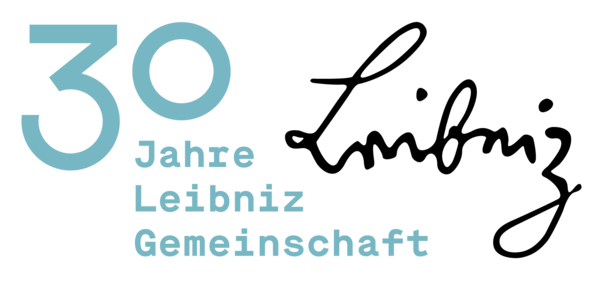Ehemalige Forschungsgruppe Diekmann (bis 2014)
Molekularbiologie
Prof. Stephan Diekmann verabschiedete sich im September 2014 in den Ruhestand.
Stephan Diekmann, ehemaliger Professor für Biophysikalische Chemie, legte seinen Forschungsschwerpunkt in seiner aktiven Zeit am FLI auf den strukturellen/funktionellen Zusammenhängen des humanen Zentromer-Kinetochor-Komplexes. Das Zentromer ist eine chromosomale Substruktur, die für die DNA-Trennung zuständig ist. Der Kinetochor-Proteinkomplex setzt sich an das Zentromer und verbindet während der Mitose das Zentromer mit den Mikrotubuli des Spindelapparats - streng überwacht vom "mitotic spindle checkpoint". Ein Gelingen der Chromosomentrennung ist für die genomische Stabilität von immenser Bedeutung, bei Fehlern kann es zu Aneuploidie kommen. Die Diekmann-Gruppe untersuchte die Proteine, die die Funktion der Zentromer-Kinetochor-Verbindung beeinflussen, beobachtete ihre Vereinigung und das komplexe Bindeverhalten in lebenden menschlichen Zellen sowie zunehmend auch in vitro.
Zelluläre Alterung
Darüber hinaus beschäftigte sich Stephan Diekmann mit zellulärer Seneszenz. Innerhalb des BMBF-geförderten Forschungskonsortiums führte er tiefgehende Transkriptomanalysen durch. In primären humanen Fibroblasten untersuchte er zudem die Folgen von mildem Stress. Aufbauend auf all seinen Erkenntnissen entwickelte er ein quantitatives Modell für die zelluläre Umwandlung von Proliferation zu Seneszenz.
Letzte Projekte
[Dieser Text ist nur auf Englisch verfügbar.]
We analyzed, mainly in vivo, the properties of the human inner kinetochore complex. Little is known about kinetochore complex topology, protein concentrations and the presence and assembly dynamics of kinetochore proteins during the cell cycle. In collaboration with the Leonhardt lab (LMU Munich), we determined inner kinetochore protein interactions in the human cell nucleus. Furthermore, we determined the protein proximities within the inner kinetochore by in vivo FRET. Combining these interaction and proximity data, we were constructing a 3-dimensional model of the interaction network of the human inner kinetochore proteins (collaboration with P. Dittrich, FSU Jena).
Parallel to these association studies, we also determined the cell cycle dependent (i) binding dynamics of kinetochore proteins to the centromere (by FRAP, FCCS) and (ii) protein concentrations. We observed a surprisingly large variability of both values. We pulled-down centromeric nucleosomes containing tagged CENP-A and analyzed their structure by EM and AFM. In collaboration with the Dalal lab (NIH, USA) we found that human CENP-A containing nucleosomes can adopt a hemisome structure consisting of only one copy of histones CENP-A, H4, H2A and H2B each (Dimitriadis et al., 2010). In a following study we found that CENP-A containing nucleosomal structures form octamers only during S-phase, but aggregate to tetramers during the rest of the cell cycle (Bui et al., 2012). We detected that CENP-N assembly into the CCAN constantly changes over the cell cycle (Hellwig et al., 2011). Next we studied the properties of CENP-T and CENP-W (collaboration with K. Sullivan, Galway, Ireland). We analyzed the cell cycle regulation, timing of assembly, generational persistence, and requirement for function of CENP-T and CENP-W in the cell cycle in human cells. The CENP-T/W complex assembles through a dynamic exchange mechanism in late S-phase and G2, is required for mitosis in each cell cycle and does not persist across cell generations (Prendergast et al., 2011), properties reciprocal to those of CENP-A. We thus proposed that the CENP-A and H3-CENP-T/W nucleosome components of the centromere are specialized for centromeric and kinetochore activities, respectively. We speculated that these two separate functions allow the cell to switch between chromatin configurations that reciprocally support (i) the replication of the centromere and (ii) its conversion to a mitotic state on post-replicative chromatin.
We continued this work by analyzing the behavior of CENP-S and CENP-X which associate with CENP-T and CENP-W at the kinetochore (Dornblut et al., in revision). Additionally, we studied the CENP-Q/U/P/O/R sub-complex of the inner kinetochore (Eskat et al., 2012). We found that the proteins of this sub-complex bind to the kinetochore as single units mostly in S-phase. Once bound to the kinetochore, two of these proteins (CENP-Q and -U) multimerise suggesting a maturatioin step of centromeric chromatin before mitosis.
[Dieser Text ist nur auf Englisch verfügbar.]
Cellular senescence is a permanent cell cycle arrest that can be induced by different mechanisms, including shortened telomeres, accumulation of DNA damage and oncogenic or oxidative stress. Senescent cells also arise in tissues with aging where they may exert anti-tumor functions and/or contribute to aging phenotypes. As an additional marker for senescent cells, we established the accumulation of annexin V at the nuclear envelope as a new tool to detect senescent cells in vitro and in human skin (Klement et al., 2012). We also demonstrated that depletion of annexin V accelerates cellular aging of primary human fibroblasts.
Within the BMBF-funded research project we analyzed the transcriptome(s) of human primary fibroblasts during their aging in vitro. Massive parallel mRNA sequencing was performed for two human primary fibroblast cell types at 5 different time points of their lifespan. Aging-associated differentially expressed genes (aaDEGs) were compared to aaDEGs from other model organisms of the JenAge consortium (H. sapiens, M. musculus, D. rerio, N. furzeri, C. elegans). Like this, we aim at identifying commonly regulated gene expression networks which might reveal new pathways of aging.
In parallel, we finished analyses of anti-aging effects of anti-oxidative compounds on primary human blood cells (Marthandan et al., 2011). We developed a systems-biology cellular senescence model (collaboration with S. Schuster, FSU Jena) establishing a new mathematical model which quantitatively describes the aging process of human fibroblast during replicative senescence (Schäuble et al., 2012). Applying this model, we quantitatively described the growth curve of several cell lines and their transition into senescence due to different origins of stress. The model made specific predictions which we tested experimentally.









